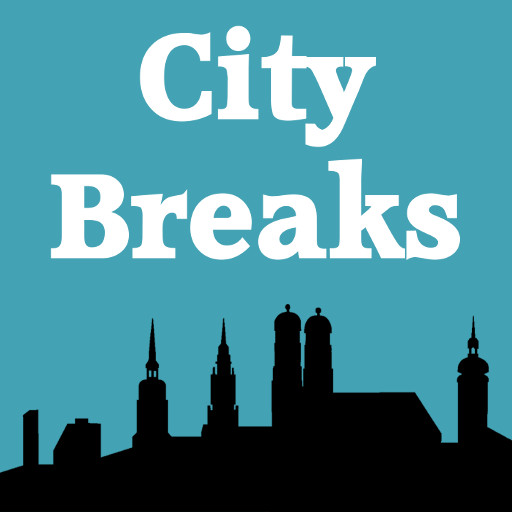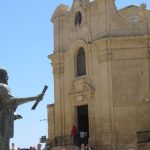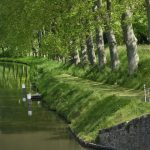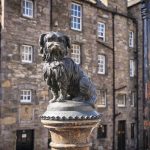This is a pot-pourri episode, beginning with a look at Valletta’s art scene: the National Art Gallery, 3 artists linked to the island and the oratory where the 2 most famous paintings are hidden away. Next, some pointers on the city’s architecture: typical design features and the three main periods, all of which are represented by buildings to look out for in Valletta. Lastly, a trip to the National Museum of Archaeology, where you can learn lots about the island’s very distant past and pick up some tips to inform visits to the rest of the island.
MUZA The National Art Museum


The MUZA is cleverly named. The 4 letters are an acronym for National Art Museum in Maltese, there’s a link to the word ‘muse’ and in Maltese the word itself means ‘mood’ or ‘inspiration’. Visiting it takes you into the courtyard and then the interior of the lovely Italian Auberge and there are lots of local goodies inside to enjoy. In the very first room you’ll find portraits of Maltese characters – an eggseller, a goatherd – and a huge colourful mural titled Maltese Crafts and Trades, celebrating, for example, fishing, spinning and weaving. Further inside are many more local scenes, including coastal and harbour views and pictures of Valletta, for example of Palace Square and St John’s Church.
In the History of Art in Malta section you’ll find a wide-ranging selection which includes Roman mosaics, religious paintings from the medieval and renaissance periods, portraits from various centuries and examples of Maltese Modernism. Look out too for works by three different artists with strong Malta connections: Matia Preti, Antonio Sciortino and Victor Pasmore.
3 maltese artists

Matia Preti (1613-1699), was Italian, but became a member of the Order of St John and settled in mid-life on Malta where he is best known for overseeing the project of transforming the inside of St John’s Cathedral. Inside, his design ideas are all around you and so are works he painted himself, notably the 18 paintings depicting the life of St John the Baptist which he painted straight onto the ceiling and the magnificent St George on Horseback, Martyrdom of St Catherine of Alexandria and Judith Holding the Head of Holofornes. Preti’s work can be found in many of Europe’s most famous galleries, including the Prado in Madrid, London’s National Gallery and the Uffizi in Florence.

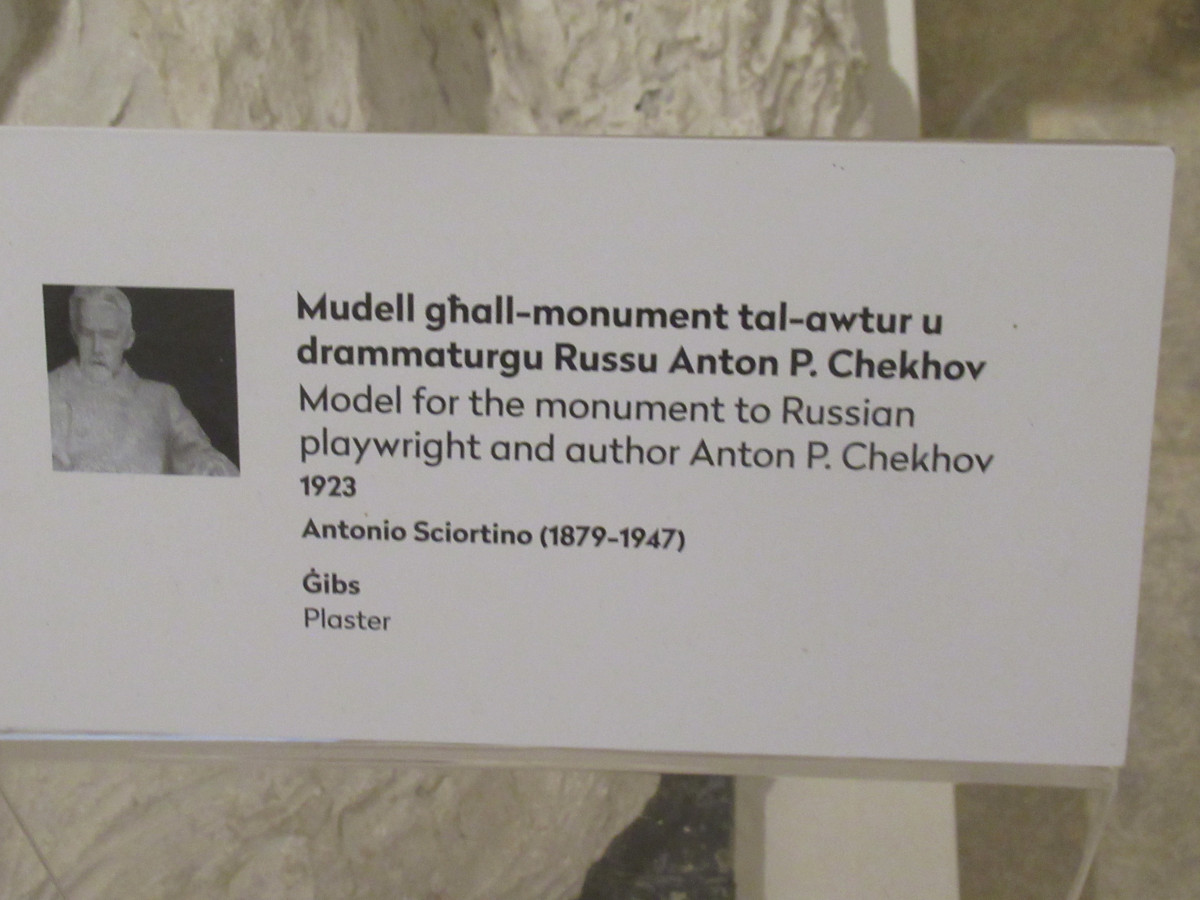
Antonio Sciortino (1879-1947) was a Maltese sculptor who studied and worked mainly in Rome before returning to Valletta to spend 10 years as the curator of the Maltese Museum of Fine Arts. His Study of Three Children, based on Les Misérables, is here and there’s a copy of it in the Upper Barakka Gardens. There are originals and plaster moulds of many of his other sculptures, depicting, for example, Chekhov, Maltese politicians, including a Grand Master, Simon Bolivar and King George V. His Monument to the Fallen of the Great Siege is a prominent sight in Republic Street and his statue of Lord Gerald Strickland, a former Maltese Prime Minister is in Upper Barrakka Gardens.
Victor Pasmore (1908-1998) was a British artist who retired to Malta and became a prominent part of the art scene. His abstract works – think ‘lines going for a walk’ – are not to everyone’s taste, but worth a look so you can decide whether you want to visit the separate Victor Pasmore Gallery just around the corner in St Paul Street.
the 2 best-known paintings in valletta


These are definitely the 2 Caravaggio works to be found in the Oratory inside St John’s Cathedral. The dark and gruesome Beheading of St John was Caravaggio’s largest painting and is based on the bible story about King Herod demanding the saint’s head on a platter. The artist signed his name – something he never did on any other work – in blood-red paint. It was painted as a gift to the Order of St John on Caravaggio’s acceptance as a member, but just months later he was de-frocked in absentia as a “foul and rotten member”.
Also here is the smaller work, another biblical story, St Jerome Writing. It shows the saint, bathed in light, translating the bible from Greek into Latin. He sits in the shadow of death, as depicted by the skull sitting in darkness on the opposite side of the table. This work was painted for one of the Knights of Malta, one Ippolito Malaspina, whose coat of arms is in the bottom right-hand corner. There’s also a short film telling Caravaggio’s life story, something there’ll be more on in Episode 08, Stories from Malta.
architectural features in valletta


Remember first that the whole of Valletta, designed from scratch by the Knights, is a UNESCO World Heritage Site. Typical design features to look out for as you walk around the city include the local limestone used for almost all the buildings, the coloured wooden doors – reds, blues, greens, yellows – and the decorative door knockers. But it’s the balconies which stand out most. They were originally an Arabic feature, either attached to the building’s façade or a ‘peephole’, designed so that women could look out of the house without being seen. Early ones are open and have balustrades, later ones are wooden box structures, usually rectangular, but sometimes curved, and usually painted dark green.
Typical features inside Valletta’s traditional buildings include high ceilings and spiral staircases, known as garigors, which wind from the basement up to the roof, with an exit onto each floor. Inside older buildings, the floors are flagstone, but anything built in the last 300 years or so may have tiled flooring, an idea copied from Spain. Elegant floral or geometric designs are used to cover the floor and look – almost! – like a carpet.
built by the knights (1566-1798)


Firstly, the Knights built fortresses to protect their new homeland, such as those of Fort St Elmo in Valletta and bastions around the Grand Harbour. Then they built the Auberges, 8 palatial buildings to house the 8 different orders and today you can still see some of them: the Auberge de Castille (now a government building), Auberge d’Italie (now the MUZA art gallery) and the Auberge de Provence (now the National Museum of Archaeology). Most splendid of all is the Grand Master’s Palace with its elegant courtyard and highly decorated interior – think marble flooring, plenty of red and gold opulence, portraits of Grand Masters and paintings of battle scenes.

The baroque splendour left behind by the Knights is best seen in two buildings. Firstly, St John’s Cathedral, whose interior is a riot of gold and marble, pillars and frescos, ceiling paintings and Maltese crosses. And, just a few minutes’ walk away in Old Theatre Street is the Manoel Theatre, commissioned by Grand Master Antonio Manoel de Vilhenain 1731 as a Teatro Pubblico to provide for ‘the honest recreation of the people’. This motto is inscribed in Latin over the main doorway: ‘Ad honestam populi oblectationem’. Inside, it’s truly splendid: three tiers of golden boxes and a pale blue trompe l’oeil ceiling designed to look like a cupola. Guided tours are available.
British rule and the modern era


Buildings dating from the period of British rule in Malta (1814-1964) include public buildings – schools and hospitals – which use the traditional limestone to create large, neoclassical structures, and the 3-storey covered market in Merchant Street. It’s called the Is-Suq Tal-Belt and was built in 1861, modelled on similar covered markets built in Victorian England. Earlier this century, a huge project, masterminded by the architect Renzo Piano, transformed the western end of Valletta. It comprised the re-modelling of the moat around the city, the building of a new City Gate and Parliament and the redevelopment of the ruins of the Old Opera House into a new concert venue.
The City Gate is set into Valletta’s original fortifications, a strong, stark structure, devoid of extraneous decoration. It’s a feat of engineering, built over an 8-metre gap in the wall and supported by thick steel blades. The nearby Parliament also blends tradition – limestone and a honeycomb effect referencing Malta’s symbol, the bee – with a modern approach – it’s a zero-emissions building, for instance. Other recent architectural projects in Valletta include the Barrakka Lift, whose glazed carriages will whisk you from the harbourside to the Upper Barrakka Gardens, and the redevelopment of the Waterfront, where restaurants have been set into the former warehouse buildings.
archAEOLOGY


The National Museum of Archaeology’s displays cover three main periods, all of which will add to your background knowledge of Malta and give you ideas for day trips from Valletta. Material from the Neolithic period (5900-2500BC) will inspire you to visit the Hagar Quim Temple – the altar is here – and there’s information on digs carried out on the island, plus a range of artefacts. Perhaps the most moving is the ‘Sleeping Lady’, a little clay figure of a woman, naked from waist up, perhaps sleeping, perhaps depicted in ‘the eternal sleep’ of death. You will surely also enjoy seeing the little stone figures which resemble corpulent garden gnomes.
Objects from the Bronze Age (33,000 – 12,000 BC) are evidence of a completely new civilisation. Out go temples, in come fortified settlements and metal, used for weapons and utensils. Spindles indicate an early textile industry, pottery storage jars and jewellery made of fishbones and shells tell us something about daily life.
The introduction to the Phoenician period (8th – 6th Century BC) tells of the
seafarers, traders and gifted artisans who travelled the Mediterranean ‘capturing the wind and guided by the stars.’ A quotation from Homer references a prize offered by Achilles to the winner of a race: ‘a mixing bowl of chased silver, holding 6 pints, it was the loveliest thing in the world, a masterpiece of Sidonian craftsmanship, which had been shipped across the misty seas by Phoenician traders’. The most memorable objects on display may well be from the Phoenician tombs found near Rabat, coffins in wood, terracotta, stone and marble, shaped to fit the human body and decorated with human faces.
Listen to the podcast
reading suggestions
Seven Temples on Malta by Betsy Ross-Edison
links for this post
The National Art Museum
The Grand Master’s Palace
St John’s Cathedral
The National Museum of Archaeology
Previous episode Finding World War Two in Valletta
Next episode Coming very soon
Last Updated on June 25, 2025 by Marian Jones
